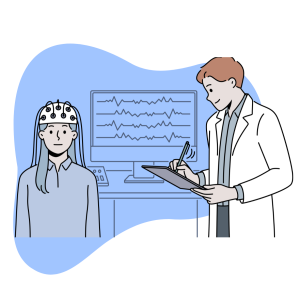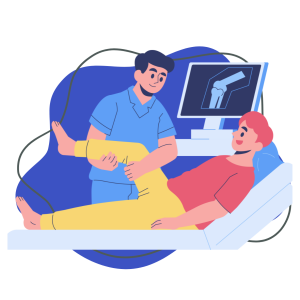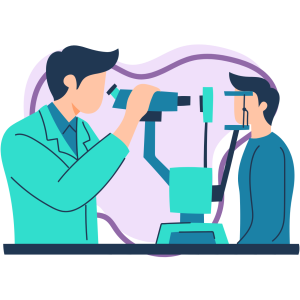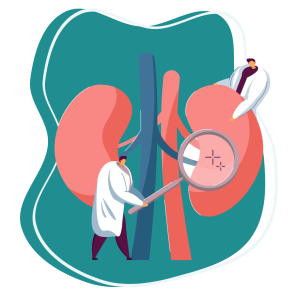Our comprehensive Hospital Information System (HIS) and Electronic Health Record (EHR) platform is meticulously engineered to transform healthcare delivery, improve patient outcomes, and maximize operational efficiency. What sets this solution apart is its modular architecture each component is purpose-built to address specific clinical, administrative, and operational challenges faced by modern healthcare institutions.
Rather than functioning in isolation, every module seamlessly integrates into the broader system, ensuring data continuity, process automation, and real-time visibility across the care spectrum. From streamlining patient workflows and clinical documentation to managing resources, compliance, and specialized treatments, the system adapts dynamically to diverse hospital environments. This level of configurability and depth makes each module not just a tool, but a strategic asset enabling hospitals to deliver personalized, coordinated, and accountable care at scale.
Core and Supplementary Modules :
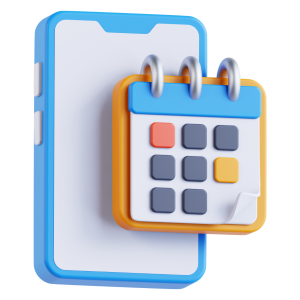

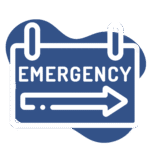




AI-Optimized Scheduling:
Automates appointment allocation based on doctor availability and patient preferences, reducing conflicts.

Self-Booking Portal:
Patients can easily book, reschedule, or cancel appointments via mobile apps or web platforms.

Multi-Location Integration:
Allows seamless scheduling across multiple hospital branches or clinic locations.

Waitlist Management:
Automatically offers open slots to patients on the waitlist, minimizing missed opportunities.

Appointment Reminders:
Sends automated SMS, email, or app notifications to reduce no-shows.

Resource Allocation:
Syncs appointments with room, staff, and equipment availability for optimal utilization.

Telehealth Integration:
Enables scheduling for both in-person visits and virtual consultations.

Multi-Language Interface:
Ensures inclusivity by supporting diverse patient demographics.
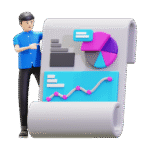
Analytics and Reporting:
Provides insights into appointment trends, patient preferences, and resource usage.
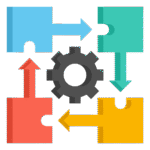
Seamless HIS Integration:
Syncs with other hospital modules like billing, registration, and medical records for a unified experience.
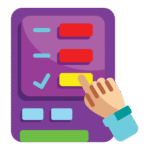
Self-Service Kiosks:
Empower patients to register independently, reducing staff workload and wait times.

Mobile-Friendly Registration:
Enable patients to pre-register via mobile apps or web portals for convenience.

Real-Time ID Verification:
Instantly validate patient identification using integrated document scanning and recognition technology.

Multi-Language Support:
Accommodates diverse patient demographics for seamless registration experiences.
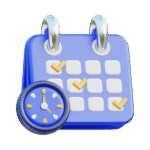
Integrated Appointment Scheduling:
Synchronize registration with appointment booking to eliminate redundancies.

Customizable Fields:
Tailor the registration process to capture hospital-specific data requirements.

Automated Insurance Validation:
Instantly verify patient insurance details during registration.

Cloud-Enabled Access:
Secure and scalable cloud-based registration data accessible anytime, anywhere.
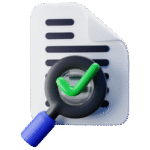
Data Accuracy Checks:
AI-powered validation ensures accurate patient information and minimizes errors.

Real-Time Patient Tracking:
Instantly update patient statuses for improved operational efficiency.
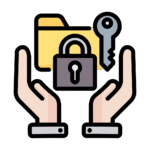
Secure Data Handling:
Complies with global healthcare standards like HIPAA for patient data security.

Comprehensive Reporting Tools:
Generate insights on patient demographics, registration trends, and service utilization.

Real-Time Patient Triage:
Prioritize critical cases instantly with AI-driven triage systems.
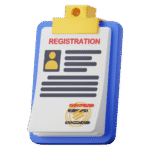
Rapid Patient Registration:
Streamlined workflows for quick emergency admissions.

Dynamic Bed Management:
Optimize bed allocation in real-time during emergencies.
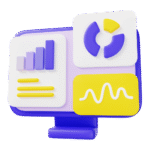
Emergency Dashboard:
Centralized dashboard for monitoring patient status and resource availability.

Integrated Communication Tools:
Real-time updates between ER teams and departments.

Digital Documentation:
Paperless record-keeping for faster, error-free reporting.

Customizable Alerts:
Automatic notifications for critical updates and status changes.
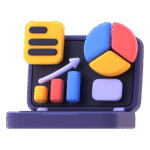
Analytics & Insights:
Generate actionable insights for ER performance improvements.

Discharge & Handover Efficiency:
Streamlined processes for smooth patient transitions.

Multi-Language Support:
Ensure effective communication in diverse patient demographics.

Intelligent Appointment Scheduling:
AI-powered scheduling reduces wait times and optimizes doctor availability.

Real-Time Queue Management:
Dynamic updates ensure patients and staff stay informed, reducing bottlenecks.
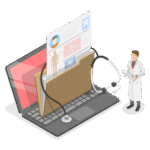
Seamless EMR:
Immediate access to patient history, lab reports, and prescriptions in one click.
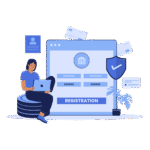
Patient Self-Registration:
User-friendly kiosks and mobile apps streamline check-ins and reduce admin workload.
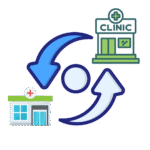
Multi-Clinic Synchronization:
Effortlessly manage multiple outpatient departments within one centralized system.

Customizable Workflows:
Tailored workflows align with unique departmental needs and specialties.

Patient Engagement Tools:
Automated SMS and email reminders for appointments, follow-ups, and feedback.

Comprehensive Billing:
Real-time billing and payment tracking for outpatient services.

Teleconsultation Ready:
Integrated virtual care options for remote consultations and follow-ups.

Dynamic Resource Allocation:
Optimize room, staff, and equipment usage based on real-time data.
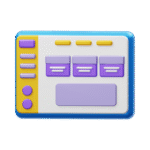
Interactive Dashboards:
Visualize OPD performance metrics with real-time analytics for better decision-making.
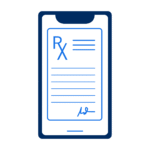
Automated Prescription Generation:
Quick and accurate prescriptions linked directly to the pharmacy module.

Multi-Language Support:
Enhance accessibility for patients from diverse linguistic backgrounds.

Scalable and Cloud-Native:
Easily handles increasing patient volumes without downtime.

Dynamic Queue Updates:
Real-time tracking and updates ensure patients and staff are always informed of waiting times.

Smart Token System:
Generate digital tokens with priority-based sequencing for streamlined patient flow.
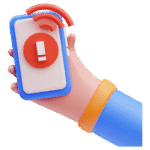
Multi-Channel Alerts:
Notify patients via SMS, email, or app about their turn to minimize waiting area congestion.

Departmental Coordination:
Sync queues across departments for seamless patient transitions and reduced delays.

AI-Driven Prioritization:
Automatically prioritize critical cases in the queue for efficient care delivery.

Interactive Dashboards:
Visualize queue status and patient flow for better operational management.

Self-Check-In Integration:
Patients can check in through kiosks or mobile apps to join queues instantly.

Customizable Workflow:
Tailor queue settings to match department-specific requirements and patient volume.

Predictive Analytics:
Leverage data to anticipate peak hours and optimize resource allocation.

Multi-Language Support:
Ensure inclusivity by accommodating diverse patient demographics in the queueing system.

Seamless Workflow Integration:
Connects admissions, discharges, and transfers with other hospital modules for smooth data flow.

Automated Patient Assignment:
Matches patients to wards or rooms based on clinical needs and preferences.

Discharge Planning Tools:
Streamlines discharge workflows with automated checklists and real-time updates.
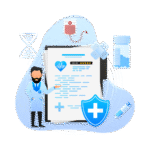
Insurance and Billing Integration:
Links ADT processes with billing to ensure accurate invoicing and insurance claims.
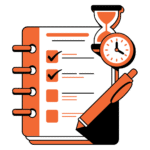
Patient Status Tracker:
Provides real-time visibility into a patient’s admission, discharge, or transfer status.

Cloud-Based Accessibility:
Enables remote monitoring and updates for streamlined operations.

Multi-Language Support:
Enhances accessibility for staff and patients from diverse backgrounds.

Real-Time Bed Management:
Instantly updates bed availability to optimize resource utilization and reduce patient waiting times.

AI-Powered Transfer Coordination:
Suggests optimal transfer routes and timing for minimal disruption.

Dynamic Notifications:
Sends alerts to staff and caregivers for every admission, discharge, or transfer event.

Customizable Policies:
Configures workflows to comply with hospital-specific protocols and regulatory requirements.

Multi-Department Synchronization:
Ensures coordinated efforts across nursing, medical, and administrative teams.

Comprehensive Reporting:
Generates actionable insights on patient movement trends and resource utilization.
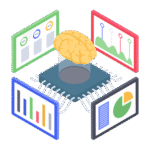
Predictive Analytics:
Identifies trends to help hospitals prepare for peak admission and discharge periods.
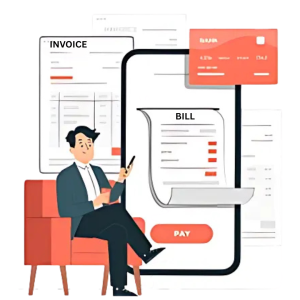


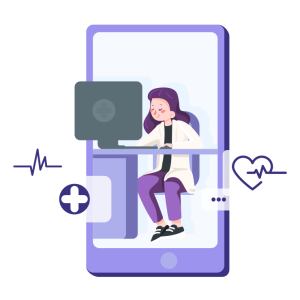



Real-Time Billing:
Instantly generates bills during outpatient and inpatient services for immediate processing.

Insurance Preauthorization:
Automates insurance validation and claim processing for smooth transactions.

Split Billing Options:
Allows for multiple payment methods and split payments between insurance and patients.

Multi-Currency Support:
Ensures smooth billing for international patients with real-time currency conversion.
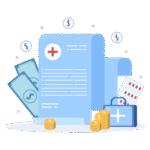
Patient-Friendly Billing:
Generates detailed, easy-to-understand bills to enhance patient satisfaction.

Flexible Discounts:
Supports customizable discount rules for corporate clients, insurance tie-ups, and promotions.

Integrated Analytics:
Offers insights into revenue streams, outstanding payments, and billing trends.

Customizable Billing Templates:
Tailors invoices to align with hospital branding and patient needs.

Error-Free Calculations:
Reduces billing errors with automated tariff application and discount calculations

Comprehensive Payment Tracking:
Tracks partial, full, and installment payments across OP and IP services.

Real-Time Cost Estimation:
Provides upfront cost estimates for procedures and treatments to enhance transparency.

Mobile Billing Access:
Enables patients to view and pay bills via mobile apps for added convenience.

Secure Payment Gateways:
Integrates with multiple payment options, ensuring secure and hassle-free transactions.

Regulatory Compliance:
Adheres to global healthcare billing standards, including tax and insurance regulations, ensuring accuracy and accountability.

Streamlined Admission and Discharge:
Simplifies short-term patient workflows for seamless same-day admissions and discharges.

Integrated Procedure Scheduling:
Syncs procedures with specialist availability and resource allocation for efficient care.

Automated Billing Integration:
Generates accurate, procedure-based bills instantly, reducing delays and errors.

Resource Utilization Analytics:
Tracks equipment, room, and staff usage for operational efficiency.

Patient Engagement Tools:
Enhances experience with appointment reminders and post-procedure feedback mechanisms.
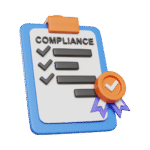
Regulatory Compliance:
Ensures daycare services meet all legal and medical documentation standards.

Real-Time Bed Allocation:
Optimizes daycare bed utilization with automated, real-time updates.

Customizable Workflow Management:
Adapts to diverse daycare services, from minor surgeries to advanced diagnostics.

Comprehensive Patient Tracking:
Monitors patient status across all daycare activities, from check-in to follow-up scheduling.
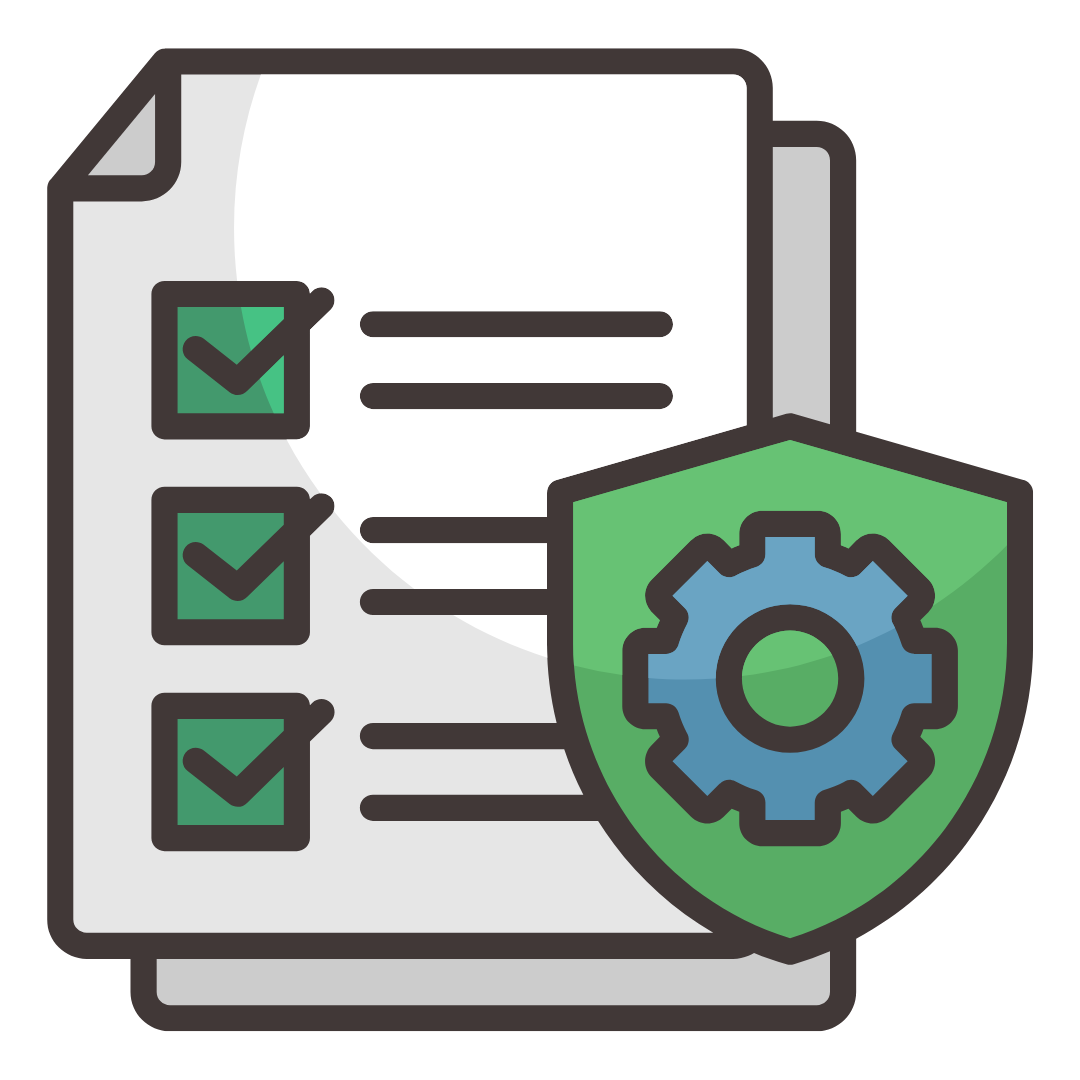
Procedure-Specific Documentation:
Automates reports, consent forms, and post-procedure care plans.

Real-Time Notifications:
Sends alerts to staff and patients about procedure timings, discharge readiness, and follow-ups.

Telehealth Ready:
Supports virtual consultations for pre-procedure evaluations and post-discharge care.
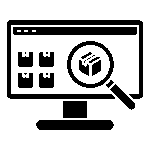
Real-Time Inventory Tracking:
Monitors stock levels with instant updates to prevent shortages or overstocking.
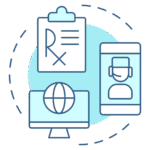
E-Prescription:
Instantly sends prescriptions to pharmacies, minimizing manual input and enhancing medication safety and accuracy.

Barcode Scanning Support:
Enhances accuracy in medication dispensing and inventory tracking.

Multi-Store Management:
Manages multiple pharmacy outlets within or across hospital branches.

Patient Medication History:
Tracks and stores patient-specific medication history for better follow-ups.

Telemedicine Support:
Integrates with telehealth services for remote prescription fulfillment.

Energy-Efficient Operations:
Automates repetitive tasks, saving time and resources for pharmacy staff.

Automated Stock Reordering:
AI-driven alerts ensure timely procurement of medicines based on usage patterns.
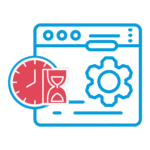
Batch and Expiry Management:
Tracks batch numbers and expiry dates to ensure safe and effective medication distribution.

Customizable Drug Database:
Supports updates to formularies, brands, and generic substitutions based on hospital needs.
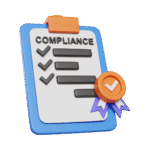
Regulatory Compliance:
Adheres to drug control regulations, ensuring legal and safety standards are met.

Drug Interaction Alerts:
Notifies pharmacists of potential adverse interactions based on prescriptions.
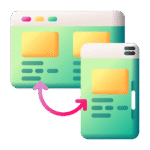
Mobile Integration:
Enables patients to order prescriptions and track medicine availability through a mobile app.

Real-Time Sales Reporting:
Provides actionable insights on medication demand and revenue streams.
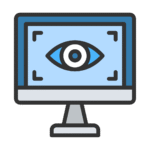
Real-Time Stock Visibility:
Provides instant updates on inventory levels across departments for seamless resource management.

Expiry and Batch Tracking:
Tracks batch numbers and expiry dates to ensure safe usage and minimize waste.
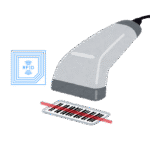
Barcode and RFID Integration:
Enhances tracking accuracy for items from procurement to utilization.
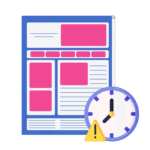
Critical Stock Alerts:
Sends real-time notifications for low stock levels, ensuring uninterrupted operations.

Inter-Department Transfers:
Simplifies the movement of resources between departments with clear tracking.

Scalable and Cloud-Based:
Adapts to growing hospital needs while providing secure, remote access to inventory data.

Automated Reordering:
AI-driven algorithms predict stock needs and trigger timely purchase orders to avoid shortages.
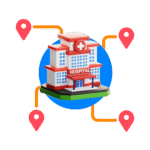
Multi-Location Management:
Centralized control of inventory across multiple hospital branches or departments.

Dynamic Consumption Analysis:
Analyzes usage patterns to optimize inventory turnover and minimize holding costs.

Theft and Pilferage Detection:
Tracks discrepancies to ensure accountability and reduce losses.
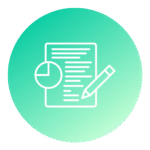
Customizable Reports:
Generates actionable insights on stock trends, supplier performance, and resource usage.

Cost Control Analytics:
Tracks inventory costs in real-time, enabling better budgeting and financial planning

End-to-End Procurement Automation:
Streamlines the entire procurement process, from requisitions to vendor payments.

Real-Time Stock Synchronization:
Ensures procurement aligns with inventory needs, reducing overstocking and shortages.
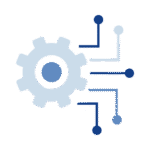
Multi-Department Requisition Integration:
Consolidates purchase requests across departments for bulk procurement efficiency.

Dynamic Purchase Orders:
Automatically generates purchase orders with pre-configured templates for speed and accuracy.

Customizable Approval Workflows:
Configures multi-level approvals to match hospital policies and authorization hierarchies.

Vendor Management System:
Centralizes vendor information for quick selection, performance tracking, and streamlined communication.
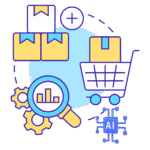
AI-Powered Forecasting:
Predicts purchasing requirements based on historical data and usage trends.

Cost Control Mechanisms:
Tracks spending in real-time and identifies opportunities for cost optimization.

Regulatory Compliance Integration:
Ensures all procurements adhere to healthcare industry standards and legal requirements.
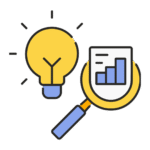
Actionable Analytics and Insights:
Delivers reports on vendor performance, spending patterns, and procurement efficiency for informed decision-making.

Centralized Digital Repository:
Stores all patient medical records securely in one easily accessible location.

Real-Time Record Updates:
Automatically syncs data from all hospital departments for up-to-date patient histories.

AI-Powered Record Retrieval:
Uses intelligent search to quickly locate records by patient name, ID, or keywords.

Multi-Format Compatibility:
Supports various formats, including scanned documents, images, and structured data.
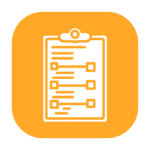
Audit Trail Tracking:
Maintains detailed logs of all access and modifications to ensure accountability.

Paperless Workflow:
Digitizes records to eliminate physical storage issues and enhance efficiency.

Compliance with Legal Standards:
Ensures adherence to healthcare regulations like HIPAA for data security and confidentiality.
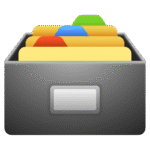
Automated Record Archiving:
Streamlines archiving and retention of old records based on hospital policies.

Customizable Access Control:
Grants role-based permissions to ensure only authorized personnel can access sensitive records.

Scalable Cloud Infrastructure:
Provides secure, scalable storage with remote access for multi-location hospitals.

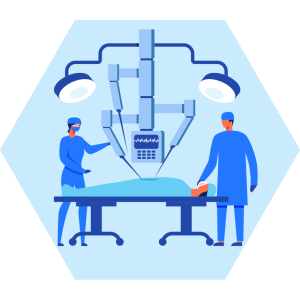

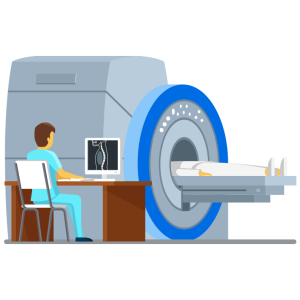



End-to-End Workflow Automation:
Streamlines lab processes, from sample collection to result delivery, ensuring efficiency and accuracy.

Real-Time Result Reporting:
Provides instant updates to clinicians and patients for faster decision-making.

Barcode and RFID Integration:
Ensures error-free sample tracking and identification throughout the lab process.

Automated Quality Control:
Continuously monitors and ensures compliance with lab quality standards.

Integration with Diagnostic Equipment:
Enables direct data import from lab instruments for seamless workflows.

Regulatory Compliance:
Ensures adherence to global standards, such as CAP, NABL, and CLIA, for lab management.

Critical Value Alerts:
Sends instant notifications to clinicians for urgent or life-threatening results.

AI-Powered Diagnostics Support:
Enhances accuracy with AI-based analysis and flagging of abnormal results.

Customizable Test Panels:
Allows the creation of tailored test profiles based on clinical and operational needs.

Multi-Lab Management:
Facilitates centralized operations for hospitals with multiple lab facilities.
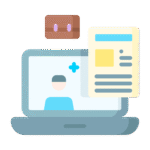
Patient Portal Access:
Allows patients to view their test results securely through an integrated online platform.

Dynamic Resource Allocation:
Optimizes staff, equipment, and test scheduling to reduce turnaround times.

Data-Driven Insights:
Generates actionable analytics on test volumes, turnaround times, and operational efficiency.

Cloud-Based Scalability:
Provides secure and scalable storage for test results and lab data across hospital branches.

Real-Time OT Scheduling:
Efficiently schedules surgeries, avoiding conflicts and optimizing OT utilization.
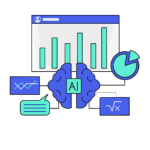
AI-Driven Resource Allocation:
Automates allocation of surgeons, staff, equipment, and OT rooms based on case requirements.

Pre-Surgery Checklist Automation:
Ensures readiness by verifying patient details, consent forms, and pre-op tests.

Critical Alerts System:
Notifies staff of schedule changes, emergency bookings, or equipment unavailability instantly.

Post-Operative Care Coordination:
Streamlines handovers to recovery wards with complete digital documentation.

Infection Control Monitoring:
Monitors OT sterilization schedules and ensures compliance with hygiene protocols.

Multi-Language Interface:
Enhances usability for diverse staff and clinicians in multinational hospitals.

Emergency Case Management:
Prioritizes urgent cases with dynamic re-scheduling and resource allocation.

Integrated Workflow Management:
Connects pre-op, intra-op, and post-op processes seamlessly for a unified experience.
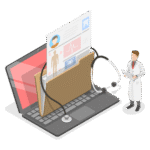
Digital Surgery Records:
Captures comprehensive surgical notes and outcomes, reducing paperwork and ensuring accuracy.

Inventory Sync:
Tracks and updates surgical supplies in real-time to prevent shortages during critical procedures.
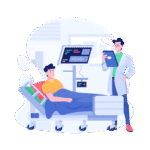
Integrated Patient Monitoring:
Links OT equipment to monitor vitals and record data directly into patient EMRs.

Surgeon Performance Analytics:
Tracks metrics like surgery duration, outcomes, and patient recovery rates.

Tele-Surgery Support:
Facilitates remote expert consultation during procedures for complex cases.

Regulatory Compliance Integration:
Ensures adherence to surgical protocols and documentation standards like WHO Surgical Safety Checklist.

Comprehensive Reporting Tools:
Delivers actionable insights on OT efficiency, resource utilization, and patient outcomes.
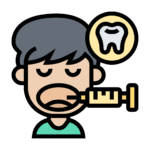
Pre-Anesthesia Assessment Integration:
Captures and evaluates patient history, lab results, and risk factors for personalized anesthesia planning.

Dynamic Drug Administration Tracking:
Tracks anesthesia dosages, timings, and responses to ensure safety and precision.

Customizable Protocols:
Supports hospital-specific and condition-specific anesthesia protocols.

Comprehensive Documentation:
Automates generation of detailed anesthesia records for compliance and clinical review.

Post-Anesthesia Care Coordination:
Streamlines handovers to PACU with complete digital documentation.
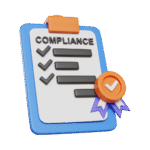
Regulatory Compliance:
Adheres to anesthesia safety guidelines and standards for documentation and practice.
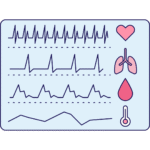
Real-Time Vital Monitoring:
Automatically records vital signs and parameters during procedures for accurate documentation.

Integrated Workflow:
Links pre-op, intra-op, and post-op anesthesia processes seamlessly within the HIS.

AI-Powered Risk Alerts:
Flags potential complications based on patient data and real-time monitoring.
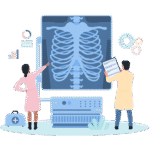
PACS Integration:
Connects imaging data for precise intra-op guidance, especially in radiology-aided procedures.
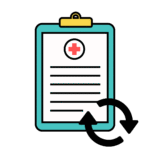
Medication Inventory Sync:
Updates pharmacy records in real-time to track anesthesia drug usage and replenishment.

Performance Analytics:
Provides insights into anesthesiologist efficiency, drug usage, and patient outcomes.
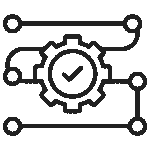
End-to-End Workflow Management:
Streamlines radiology operations, from appointment scheduling to result delivery.

AI-Powered Image Analysis:
Enhances diagnostic accuracy with AI-based pattern recognition and anomaly detection.

PACS Integration:
Effortlessly connects with Picture Archiving and Communication Systems for centralized image storage and retrieval.

Critical Findings Alerts:
Automatically flags and notifies clinicians of urgent imaging results.
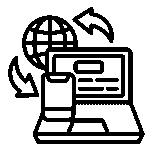
Mobile and Remote Access:
Allows radiologists to review images and reports securely from any location.

Real-Time Report Delivery:
Enables instant access to radiology results for clinicians and patients.

Dynamic Resource Scheduling:
Optimizes radiology staff, equipment, and room usage to minimize patient waiting times.

Customizable Reporting Templates:
Supports standardized and tailored radiology reports to meet diverse clinical needs.
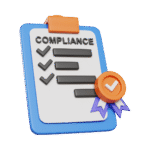
Regulatory Compliance:
Ensures adherence to standards like DICOM, HIPAA, and ACR for data handling and reporting.

Advanced Analytics Tools:
Provides insights into imaging trends, equipment usage, and department performance.

Personalized Treatment Plans:
Facilitates tailored therapy regimens based on patient-specific diagnoses and goals.

Progress Tracking Tools:
Monitors and records patient recovery milestones for data-driven care adjustments.

Interactive Patient Portals:
Enables patients to view prescribed exercises, session details, and progress updates remotely.
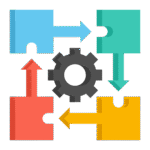
Seamless HIS Integration:
Connects with patient records, billing, and diagnostic modules for holistic care coordination.

Tele-Rehab Support:
Offers virtual physiotherapy sessions for remote patient engagement and continuity of care.

Regulatory Compliance:
Ensures adherence to rehabilitation standards and documentation requirements.

Session Scheduling Integration:
Streamlines appointment booking with real-time therapist and equipment availability.

Exercise Library Access:
Provides therapists with a comprehensive database of exercises and protocols for various conditions.

AI-Powered Therapy Suggestions:
Recommends therapy adjustments based on patient progress and real-time data.

Automated Billing:
Tracks therapy sessions and generates accurate invoices, reducing administrative workload.

Resource Optimization:
Manages equipment, room allocations, and therapist schedules to maximize efficiency.

Comprehensive Analytics:
Delivers insights into therapist performance, session outcomes, and patient satisfaction for continuous improvement.
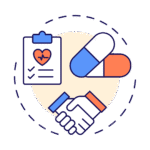
Medication Reconciliation:
Ensures seamless tracking of patient medications across all stages of care to prevent errors.
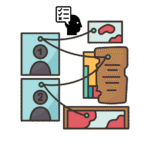
Evidence-Based Recommendations:
Offers AI-driven insights for optimized medication choices tailored to patient profiles.

Customizable Dosing Protocols:
Supports condition-specific and patient-specific dosing adjustments for precision therapy.

Patient Education Support:
Generates easy-to-understand medication guides to improve adherence and outcomes.

Post-Discharge Medication Plans:
Facilitates creation and monitoring of post-care medication regimens with follow-up reminders.

Drug-Drug Interaction Alerts:
Provides real-time notifications to clinicians about potential adverse interactions for enhanced safety.
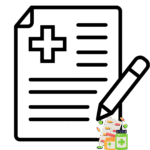
Integrated Prescription Management:
Links prescriptions directly with patient records, diagnostics, and treatment plans for comprehensive care.
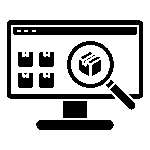
Real-Time Inventory Sync:
Tracks medication availability and updates pharmacy stock instantly for uninterrupted patient care.
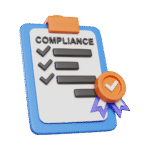
Regulatory Compliance:
Adheres to global medication safety standards and documentation practices for audit readiness.

Analytics and Reporting:
Provides actionable insights on drug utilization patterns, prescribing trends, and clinical outcomes.
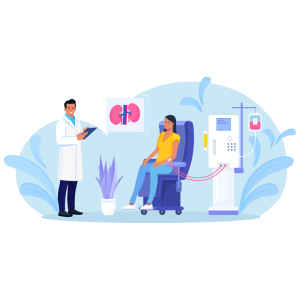






Comprehensive Patient Profiles:
Maintains detailed dialysis history, comorbidities, and treatment plans for each patient.

Dynamic Treatment Tracking:
Monitors vital parameters like BP, UF rates, and blood flow in real-time during dialysis sessions.
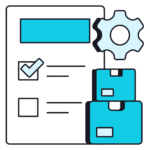
Consumables Inventory Sync:
Tracks dialysis supplies and updates inventory in real-time to prevent stockouts.

Patient Portal Access:
Allows patients to track session history, health progress, and upcoming appointments online.

Multi-Center Management:
Facilitates centralized coordination for dialysis operations across multiple hospital branches.

Automated Session Scheduling:
Streamlines appointment booking with real-time visibility of dialysis machine and staff availability.
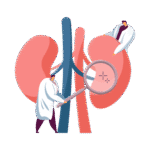
Personalized Dialysis Protocols:
Supports condition-specific customization of dialysis parameters for optimized outcomes.

AI-Powered Risk Alerts:
Detects abnormalities during sessions and flags them for immediate intervention.

Regulatory Compliance:
Ensures adherence to dialysis safety standards and detailed documentation requirements.

Comprehensive Analytics:
Delivers actionable insights on session efficiency, patient outcomes, and resource utilization.

Real-Time Infection Surveillance:
Tracks and identifies infection patterns across departments for proactive management.

AI-Powered Risk Alerts:
Flags high-risk cases based on patient data, environmental factors, and historical trends.

Antibiotic Usage Monitoring:
Tracks and optimizes antibiotic prescriptions to prevent resistance and improve outcomes.

Customizable Protocols:
Supports hospital-specific infection prevention and control policies.

Automated Reporting:
Generates detailed infection reports for regulatory compliance and internal audits.

Integrated Workflow:
Links infection control data with patient records, lab results, and treatment plans for seamless care coordination.

Dynamic Outbreak Management:
Provides actionable insights and tools to contain infections during outbreaks.

Comprehensive Analytics:
Offers insights on infection trends, compliance rates, and intervention effectiveness to drive continuous improvement.

Real-Time Incident Reporting:
Enables instant logging of incidents via web, mobile apps, or integrated kiosks.
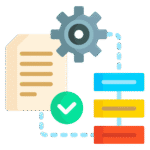
Automated Workflow Management:
Streamlines incident investigation and resolution with pre-defined workflows.

Root Cause Analysis Integration:
Provides tools to identify and address the underlying causes of incidents.

Role-Based Access Control:
Ensures sensitive incident data is accessible only to authorized personnel.
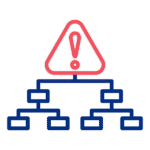
Customizable Incident Categories:
Adapts to hospital-specific incident types for accurate classification and tracking.

Performance Metrics Dashboard:
Tracks resolution times, incident frequencies, and team performance for continuous improvement.

Dynamic Alerts and Notifications:
Sends real-time updates on incident status to relevant teams for faster action.
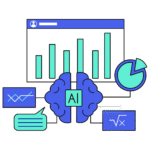
AI-Powered Insights:
Analyzes incident trends to proactively mitigate risks and improve safety.

Regulatory Compliance:
Ensures incident reporting and management adhere to healthcare standards and legal requirements.

Comprehensive Reporting:
Generates detailed reports for audits, safety committees, and quality improvement initiatives.
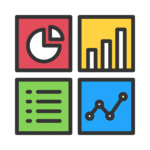
Multi-Department Integration:
Connects incident management data with patient care, staff, and facility records for holistic insights.

Mobile Accessibility:
Allows staff to report and update incidents on the go for faster documentation.
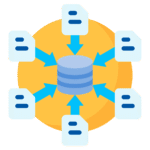
Centralized Case Management:
Consolidates patient records, diagnostic results, and treatment plans in one interface for multidisciplinary review.

Real-Time Collaboration Tools:
Enables virtual and in-person discussions with secure video conferencing and document sharing.

Decision Documentation:
Captures and archives all meeting discussions and treatment decisions for accountability and compliance.

Multi-Disciplinary Coordination:
Facilitates seamless collaboration between oncologists, radiologists, pathologists, and surgeons.
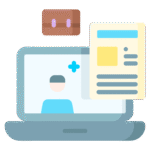
Patient-Centric Portal:
Offers patients insights into their care plans and updates after tumor board meetings.

Integrated Workflow Automation:
Streamlines tumor board meeting scheduling, case submissions, and follow-up tracking.
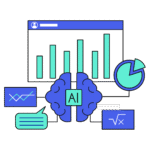
AI-Powered Treatment Insights:
Provides evidence-based recommendations tailored to individual patient profiles.

Customizable Templates:
Allows for hospital-specific tumor board workflows and reporting formats.

Automated Notification System:
Sends reminders and updates to participants about upcoming meetings and case changes.

Performance Analytics:
Tracks outcomes of tumor board decisions, patient survival rates, and care efficiency.

Personalized Diet Plans:
Automatically generates patient-specific meal plans based on medical conditions, allergies, and dietary restrictions.

Inventory Management Integration:
Tracks kitchen supplies and ensures optimal stock levels for efficient meal preparation.

Multi-Department Coordination:
Links with nursing and medical teams to ensure seamless diet planning and delivery.

Meal Scheduling Automation:
Plans and schedules meal deliveries to patient rooms with precision.

Allergy Alerts:
Flags potential allergens in recipes to ensure patient safety.

Nutritional Analytics:
Provides insights into patient nutrition trends and kitchen efficiency.

Catering for Staff and Visitors:
Extends services to include meal management for hospital staff and visitors.

Real-Time Patient Updates:
Syncs with patient records to adapt diets dynamically to changing health conditions.

Recipe Standardization:
Maintains a digital library of recipes with standardized portions for consistent meal quality.
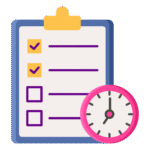
Diet Compliance Tracking:
Monitors and records patient adherence to prescribed dietary regimens.

Customizable Menus:
Supports hospital-specific menu options to cater to diverse patient demographics.

Waste Reduction Tools:
Tracks food preparation and consumption to minimize kitchen waste.

Cloud-Based Scalability:
Supports centralized kitchen management for multi-location hospitals.
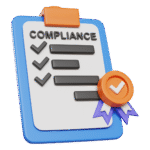
Regulatory Compliance:
Ensures adherence to dietary standards and food safety regulations.

Automated Sterilization Tracking:
Tracks instruments through the entire sterilization process with real-time updates.

Sterilization Cycle Validation:
Monitors and validates each sterilization cycle for compliance and safety.

Instrument Lifecycle Management:
Tracks usage, sterilization history, and maintenance schedules for each instrument.
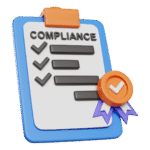
Regulatory Compliance:
Adheres to global sterilization standards, including ISO and AAMI guidelines.

Integration with OT Module:
Synchronizes with the Operation Theatre module for timely instrument delivery and tracking.
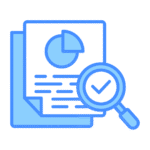
Detailed Audit Trails:
Maintains comprehensive logs of sterilization cycles and instrument usage for accountability.

Analytics and Reporting:
Delivers insights on cycle efficiency, instrument utilization, and CSSD performance metrics.

Barcode and RFID Integration:
Ensures precise identification and tracking of surgical instruments and equipment.

Seamless Inventory Sync:
Updates inventory levels in real-time to maintain adequate sterile instrument availability.

Customizable Workflow Automation:
Configures sterilization workflows to align with hospital-specific protocols.

Dynamic Resource Allocation:
Optimizes CSSD staff and equipment utilization for peak efficiency.

Automated Alerts and Reminders:
Notifies staff of upcoming sterilization requirements or equipment maintenance needs.

Waste Management Integration:
Tracks and manages the disposal of biohazard materials in compliance with regulations.

Cloud-Based Scalability:
Supports centralized CSSD operations across multi-location hospital networks.


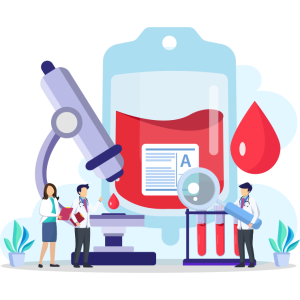




AI-Optimized Scheduling:
Automatically creates balanced rosters, considering staff preferences, availability, and patient demand.

Multi-Department Integration:
Coordinates rosters across departments to ensure optimal staffing levels hospital-wide.

Compliance Management:
Ensures adherence to labor laws, hospital policies, and mandatory rest periods.

Overtime and Cost Control:
Tracks hours worked to manage overtime and reduce unnecessary staffing costs.
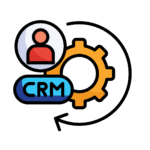
Leave Management Integration:
Syncs with leave applications to prevent scheduling conflicts and ensure coverage.

Dynamic Shift Adjustments:
Adapts schedules in real-time for emergencies, absences, or peak hours.

Role-Based Assignments:
Matches staff skills and qualifications with specific duties for efficient task allocation.

Self-Service Portal:
Enables staff to view, swap, or request shifts directly via mobile or web apps.

Performance Analytics:
Provides insights into attendance, productivity, and resource utilization for data-driven improvements.

Cloud-Based Scalability:
Allows centralized roster management across multi-location hospital networks for consistent staffing practices.

End-to-End Workflow Automation:
Streamlines the entire linen lifecycle, from collection to cleaning, tracking, and distribution.

Barcode and RFID Integration:
Ensures precise tracking of linen items through every stage of the process.

Dynamic Utilization Analytics:
Provides insights into linen usage trends, reducing waste and optimizing efficiency.
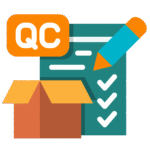
Quality Control Checks:
Tracks and ensures adherence to cleanliness and hygiene standards for patient safety.
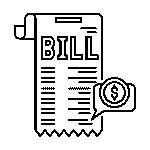
Integrated Billing:
Links with financial systems to allocate laundry costs to relevant departments.
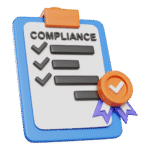
Regulatory Compliance:
Ensures adherence to infection control protocols and healthcare standards for linen management.

Real-Time Inventory Tracking:
Monitors linen usage and availability across departments to prevent shortages.

Customizable Allocation Policies:
Tailors linen distribution to meet specific departmental needs and usage patterns.

Automated Linen Requests:
Allows departments to submit linen requests through the system for fast fulfillment.

Cost Control Mechanisms:
Monitors laundry expenses and identifies opportunities for cost optimization.

Multi-Location Management:
Centralizes linen and laundry operations for hospitals with multiple branches.

Wear and Tear Monitoring:
Tracks linen lifecycle to identify items due for replacement or repair.
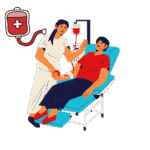
Comprehensive Blood Inventory Management:
Tracks blood units, types, and components in real-time for optimal availability.

Donor Management System:
Maintains a detailed donor database, including donation history, eligibility, and health status.

Cross-Matching Integration:
Automates compatibility testing for efficient and error-free transfusion planning.

Real-Time Alerts:
Notifies staff of expiring units or critical stock levels to prevent shortages or wastage.

Component Separation Tracking:
Monitors the preparation and storage of blood components like plasma, platelets, and RBCs.

Detailed Reporting and Analytics:
Generates insights on blood usage, donor demographics, and inventory turnover.

Multi-Center Coordination:
Centralizes blood inventory management across multiple hospital branches for efficient resource sharing.

Barcode and RFID Integration:
Ensures accurate identification and tracking of blood bags from collection to transfusion.
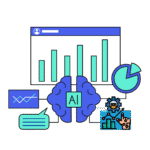
AI-Driven Demand Forecasting:
Predicts blood requirements based on historical data and seasonal trends.

Regulatory Compliance:
Adheres to national and international blood safety standards, ensuring traceability and accountability.
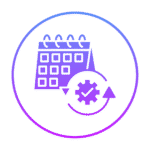
Automated Donation Scheduling:
Simplifies appointment booking for donors with reminders and confirmations.
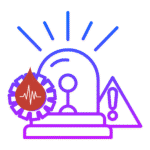
Emergency Management Tools:
Facilitates rapid response for urgent blood requests and disaster scenarios.

Inventory Traceability:
Provides end-to-end visibility into the journey of every blood unit.

Audit Trail and Security:
Maintains detailed logs of all activities to ensure transparency and safeguard patient safety.
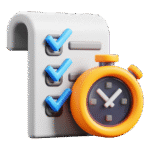
Real-Time Performance Tracking:
Continuously monitors clinical performance against predefined quality benchmarks.
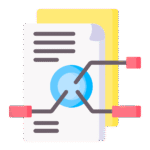
Integrated Workflow Analysis:
Links quality measures to patient care workflows for actionable insights.

Regulatory Compliance:
Ensures adherence to national and international healthcare quality standards, such as CMS and JCI.

Patient Safety Monitoring:
Tracks adverse events, readmissions, and infection rates to enhance care outcomes.

Actionable Insights:
Delivers root cause analysis and recommendations to close performance gaps.
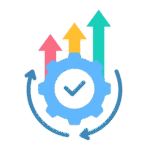
Continuous Improvement Tools:
Provides tools to track progress on quality initiatives and assess long-term impact.
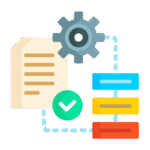
Customizable Metrics:
Supports hospital-specific and regulatory-defined quality measures for tailored tracking.

AI-Powered Predictive Analytics:
Identifies trends and potential quality gaps to drive proactive interventions.
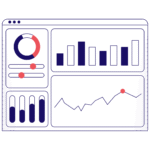
Dynamic Dashboards:
Provides visually intuitive, real-time dashboards for quick performance assessment.

Automated Reporting:
Simplifies reporting for audits and accreditation processes with pre-configured templates.

Multi-Department Collaboration:
Facilitates cross-departmental efforts to improve clinical quality standards.

Mobile Access:
Enables clinicians and administrators to track quality metrics and trends on-the-go.

Comprehensive Body Tracking:
Uses barcode or RFID technology to track bodies from admission to release with complete traceability.

Automated Notifications:
Sends real-time alerts to families, staff, or legal authorities about body release or pending actions.
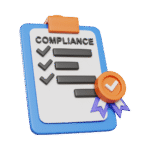
Regulatory Compliance:
Ensures adherence to local and international standards for mortuary operations and documentation.

Cold Storage Monitoring:
Tracks and records temperature data to ensure compliance with preservation standards.

Comprehensive Reporting:
Generates reports on mortuary usage, storage durations, and operational efficiency.

Seamless HIS Integration:
Links mortuary records with patient data, legal documentation, and billing systems for unified management.
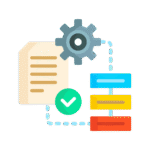
Customizable Workflow Automation:
Configures workflows to align with hospital-specific mortuary protocols.
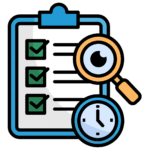
Detailed Audit Trails:
Maintains logs of all actions, ensuring accountability and transparency for sensitive operations.

Dynamic Space Allocation:
Optimizes storage space utilization for efficient handling during peak demand periods.

Mobile Access for Staff:
Allows authorized personnel to update or retrieve mortuary records on-the-go securely.

Real-Time Task Assignment:
Automatically assigns cleaning tasks based on priority areas like ERs, OTs, and patient rooms.

Integrated Infection Control:
Links with infection control protocols to ensure high-risk areas are sanitized promptly.

Customizable Cleaning Protocols:
Supports hospital-specific cleaning standards and regulatory compliance requirements.

Comprehensive Reporting Tools:
Generates insights on task completion rates, turnaround times, and operational efficiency.

Multi-Department Coordination:
Integrates with other modules like CSSD and maintenance for seamless operations.

Complaint and Feedback Management:
Tracks housekeeping-related complaints and ensures timely resolution.

Dynamic Workflow Automation:
Streamlines housekeeping schedules with real-time updates for task status and completion.

Resource Optimization:
Tracks cleaning supplies and staff availability for efficient allocation and inventory management.

Automated Notifications:
Sends reminders and alerts to staff for routine or urgent cleaning tasks.
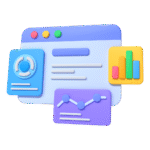
Interactive Dashboards:
Provides supervisors with a visual overview of housekeeping performance and resource utilization.

Mobile Accessibility:
Enables staff to receive, update, and close tasks via mobile devices for on-the-go efficiency.

Energy-Efficient Operations:
Suggests optimal schedules and workflows to minimize resource wastage while maintaining cleanliness standards.
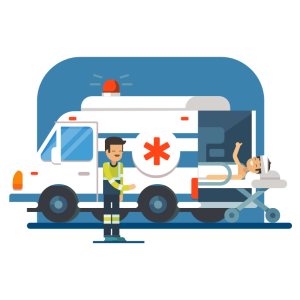

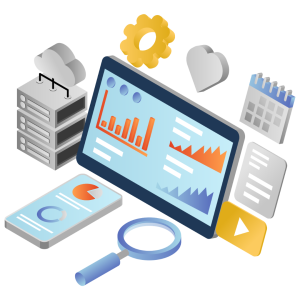


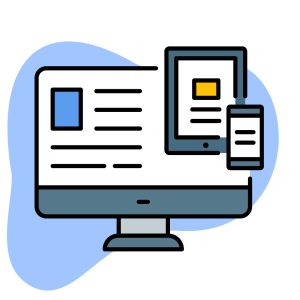

Real-Time Ambulance Tracking:
Uses GPS integration to monitor ambulance location and arrival times accurately.
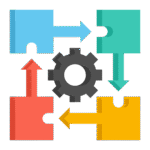
Seamless Workflow:
Links ambulance records with patient admission, emergency, and billing modules for a unified workflow.

Patient Data Sync:
Transmits critical patient information to hospital teams en route for better preparedness.
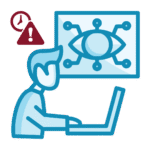
Automated Maintenance Alerts:
Tracks ambulance usage and schedules maintenance to ensure readiness.

Comprehensive Reporting:
Generates insights on response times, utilization rates, and operational efficiency.

Dynamic Dispatch Management:
Assigns the nearest available ambulance based on real-time location and patient priority.

Emergency Route Optimization:
Provides AI-powered navigation for the fastest and safest routes during emergencies.

Multi-Vehicle Coordination:
Manages multiple ambulances across locations for efficient resource allocation.

Integrated Communication Tools:
Enables real-time communication between ambulance staff and hospital emergency teams.

Mobile Access for Drivers:
Provides task details, navigation, and updates via a driver-friendly mobile interface.

Centralized Patient Engagement:
Consolidates patient interactions, feedback, and preferences for personalized care delivery.

Feedback Management System:
Collects and analyzes patient feedback to enhance service quality and satisfaction.

Patient Journey Mapping:
Tracks every touchpoint of the patient experience to identify and resolve gaps.

Loyalty and Retention Programs:
Supports reward systems to enhance patient loyalty and long-term retention.

Multi-Channel Communication:
Enables consistent communication across email, SMS, app notifications, and call centers.

Automated Appointment Reminders:
Sends SMS, email, or app notifications to reduce no-shows and improve patient retention.

Integrated Marketing Campaigns:
Automates targeted campaigns for health checkups, follow-ups, and wellness programs.

Real-Time Analytics:
Provides actionable insights into patient demographics, satisfaction trends, and engagement metrics.
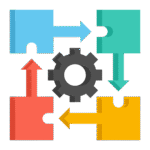
Seamless HIS Integration:
Links CRM with appointment scheduling, billing, and EMR for a 360-degree patient view.

AI-Powered Predictive Insights:
Anticipates patient needs and preferences for proactive engagement and improved outcomes.

Comprehensive Data Integration:
Aggregates data from all hospital modules for centralized and holistic reporting.
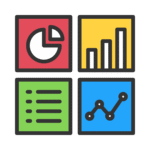
Real-Time Analytics:
Provides up-to-the-minute insights for proactive decision-making.
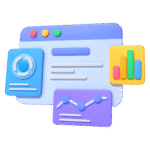
Interactive Dashboards:
Delivers visually dynamic dashboards with drill-down capabilities for granular insights.

Regulatory Compliance Tracking:
Monitors compliance with healthcare standards and provides audit-ready reports.

Data-Driven KPI Monitoring:
Tracks Key Performance Indicators (KPIs) to evaluate and optimize hospital performance.

Resource Utilization Insights:
Offers detailed insights into bed occupancy, staff productivity, and equipment usage.

Multi-Language Reporting:
Generates reports in multiple languages for global hospital networks.

Customizable Report Templates:
Supports tailored reports to meet specific management and operational needs.

AI-Driven Forecasting:
Predicts trends in patient flow, resource utilization, and revenue generation.
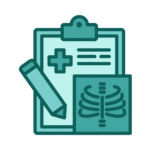
Multi-Department Reporting:
Consolidates performance metrics from clinical, financial, and administrative departments.

Automated Report Scheduling:
Sends periodic reports to stakeholders via email or dashboards on pre-defined schedules.

Cost and Revenue Analysis:
Breaks down financial data to identify cost-saving opportunities and revenue streams.

Patient Demographic Trends:
Analyzes patient demographics to guide marketing and service improvements.

Cloud-Based Accessibility:
Enables secure access to MIS reports from any location for remote decision-making.

AI-Powered Insights:
Leverages artificial intelligence to identify trends, patterns, and anomalies in hospital data.
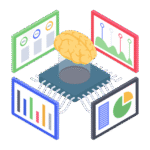
Predictive Analytics:
Forecasts patient volumes, resource needs, and revenue trends to aid strategic planning.

Drill-Down Functionality:
Allows users to explore granular data behind high-level metrics for deeper insights.

Visual Data Representation:
Delivers insights through interactive charts, heatmaps, and graphs for easy interpretation.
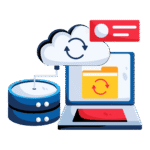
Real-Time Data Sync:
Updates reports dynamically for up-to-the-minute decision-making.
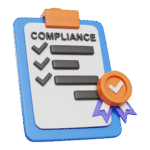
Regulatory Compliance Monitoring:
Tracks adherence to healthcare standards and regulations with detailed compliance metrics.
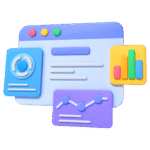
Customizable Dashboards:
Creates tailored dashboards for executives, clinicians, and administrators with real-time updates.

Multi-Source Data Integration:
Combines data from clinical, operational, and financial modules for comprehensive analysis.
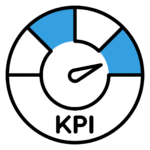
KPI Tracking and Benchmarking:
Monitors Key Performance Indicators (KPIs) and compares performance against benchmarks.

Role-Based Access:
Ensures secure, customizable access to reports based on user roles and responsibilities.

Mobile and Cloud Accessibility:
Provides secure, on-the-go access to BI reports for remote decision-making.

Health Record Viewer:
Displays medical history, lab results, and prescriptions with easy navigation.
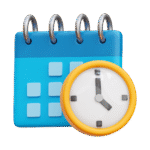
Appointment Scheduler:
Allows patients to book, reschedule, or cancel appointments with real-time availability.
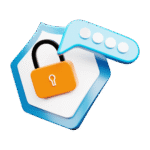
Secure Chat System:
Enables encrypted messaging for patients to communicate with providers.

Medication Reminders:
Sends alerts for medication schedules with adherence tracking options.

Telehealth:
Facilitates virtual visits with video calls and appointment reminders.

Symptom Tracker:
Logs symptoms for sharing with providers.
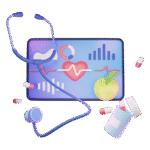
Health Goal Monitoring:
Tracks patient health goals with progress charts.

Lab Result Notifications:
Sends alerts with explanations when new lab results are available.

Vaccination Tracker:
Logs and reminds patients of upcoming vaccination schedules.

Lab Results Viewer:
Displays lab results with explanations, helping patients understand their health status.

Medication Refill Requests:
Allows patients to request prescription refills directly through the portal.

Secure Messaging System:
Enables encrypted two-way communication between patients and providers.

Appointment Reminders:
Sends automated reminders for upcoming appointments via email or SMS.

Telehealth Scheduler:
Integrates virtual visit scheduling with video consultation capabilities.

Health Summary Dashboard:
Provides a snapshot of vital signs, recent visits, and upcoming tasks.

Patient Consent Forms:
Facilitates digital signing of consent forms for procedures or treatments.

Bill Payment Integration:
Allows patients to view and pay medical bills securely online.

Health Education Library:
Offers access to videos and articles tailored to patient conditions.

Symptom Tracker:
Enables patients to log symptoms and share with providers for monitoring.
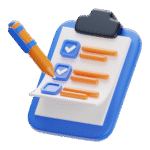
Care Plan Documentation:
Structured templates for documenting patient care plans and updates.

Medication Administration Alerts:
Barcode scanning for medication verification with mismatch alerts.

Vitals Monitoring Dashboard:
Displays real-time vitals (e.g., BP, HR) with color-coded alerts.

Shift Handover Tool:
Automates handover reports, ensuring continuity of care between shifts.
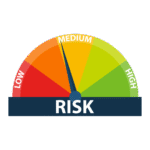
Fall Risk Scoring:
Calculates fall risk scores (e.g., Morse Scale) with preventive alerts.

IV Fluid Tracker:
Logs IV fluid administration rates and volumes for accurate monitoring.

Wound Care Notes:
Documents wound assessments with image uploads for tracking progress.

Patient Assignment System:
Assigns patients to nurses with workload balancing features.

Nursing Outcome Analytics:
Tracks nursing care outcomes (e.g., infection rates) for improvement.

Task Scheduler:
Prioritizes and schedules nursing tasks (e.g., med rounds, vitals checks).

Automated Fee Calculations:
Calculates doctor shares based on procedures, visits, and predefined rates.

Revenue Split Dashboard:
Displays real-time revenue distribution across specialties for transparency.
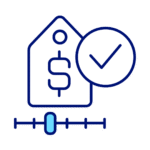
Multi-Specialty Share Rules:
Configures share rules for different specialties (e.g., cardiology, orthopedics).
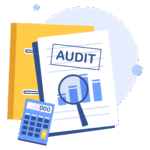
Financial Audit Trail:
Logs all share transactions with timestamps for compliance audits.

Payout Scheduler:
Automates monthly payout schedules with notifications to doctors.

Predictive Patient Flow Analytics:
Forecasts patient admissions and discharges for optimal resource planning.

Financial Performance Dashboard:
Displays revenue, expenses, and payer mix with drill-down insights.

Bed Occupancy Analyzer:
Tracks real-time bed utilization rates with occupancy trend reports.
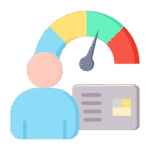
Readmission Risk Scoring:
Identifies high-risk patients for readmission, enabling preventive measures.
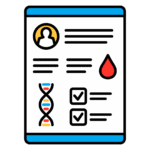
Clinical Outcome Reports:
Analyzes patient outcomes for quality improvement.

Revenue Cycle Insights:
Monitors billing cycles, identifying delays for faster reimbursements.

Equipment Maintenance Scheduler:
Automates scheduling of routine equipment checks and repairs.

Maintenance Work Order System:
Generates and tracks work orders for repairs with status updates.
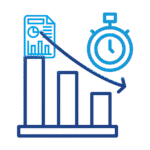
Downtime Impact Report:
Analyzes equipment downtime effects on hospital operations for improvement.
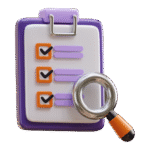
Facility Inspection Checklist:
Digital checklists for facility inspections.
Clinical Modules :

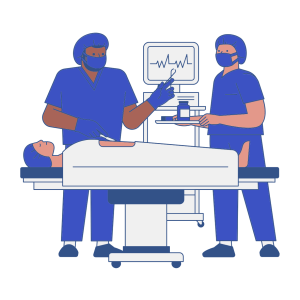




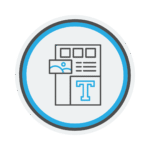
Customizable Templates:
Pre-built templates for chronic disease management, reducing documentation time in general medicine.

Interoperability:
HL7/FHIR integration connects labs, pharmacies, and billing for seamless workflows.

AI-Driven Support:
Real-time AI insights for managing chronic conditions, enhancing clinical decisions.
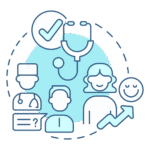
Patient Engagement:
Portal for patients to access records, schedule appointments, and receive health tips.

Preventive Care Workflows:
Template-based workflows for screenings and vaccinations, optimizing care delivery.
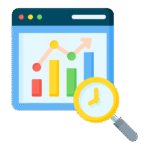
Real-Time Analytics:
Tracks patient outcomes and practice efficiency for data-driven decisions.

Surgical Checklist Templates:
Standardized templates for pre-op checklists, ensuring all safety protocols are followed before surgery.
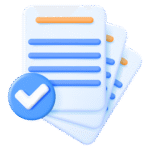
Intra-Op Documentation:
Real-time templates for documenting procedure details, such as incision type and complications, directly in the OR.

Post-Op Care Pathways:
Automated templates for post-op orders, pain management, and wound care, streamlining recovery protocols.

Surgical Consent Management:
Digital consent forms integrated into workflows, ensuring compliance and easy retrieval during audits.
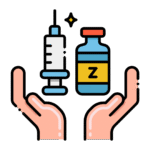
Anesthesia Integration:
Links with anesthesia systems to document dosages and monitor patient vitals during surgery.

OR Scheduling Optimization:
Templates for scheduling surgeries, coordinating staff, and reserving equipment, reducing delays.
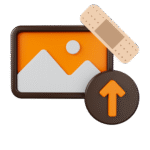
Wound Imaging Upload:
Allows surgeons to upload and annotate wound images directly into the EHR for tracking healing.
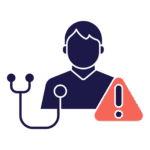
Complication Prediction Alerts:
AI-driven alerts for potential post-op complications like infections, based on patient data.

Surgical Outcome Analytics:
Tracks surgery success rates and complications, providing actionable insights for improvement.

Patient Follow-Up Scheduler:
Automates scheduling of post-op follow-ups, ensuring timely patient check-ins and monitoring
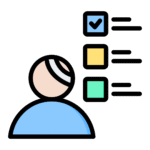
Rapid Triage Scoring:
Automated triage scoring (e.g., ESI scale) to prioritize patients based on severity.

Trauma Protocol Templates:
Predefined templates for trauma cases, guiding rapid assessment and treatment.

Code Blue Workflow:
Streamlined workflow for cardiac arrest, coordinating team response and documentation.

Real-Time Bed Tracking:
Displays available beds and ICU slots, speeding up patient allocation.

Critical Alert System:
Sends instant alerts to A&E staff for life-threatening conditions like sepsis.

Ambulance Integration:
Tracks incoming ambulances, pre-populating patient data for faster intake.

Mass Casualty Mode:
Templates for managing multiple casualties, ensuring efficient resource allocation.
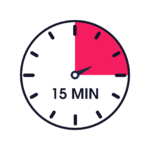
Procedure Timer:
Tracks time-sensitive procedures (e.g., thrombolysis), ensuring timely interventions.

Disaster Response Dashboard:
Central dashboard for coordinating care during mass casualty events.

Voice-Activated Documentation:
Hands-free documentation for A&E staff during high-pressure scenarios.
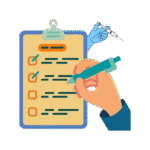
Pre-Anaesthesia Assessment Templates:
Guides comprehensive pre-op evaluations, documenting risks and allergies.

Intra-Op Anaesthesia Charting:
Real-time charting for drug administration, vitals, and events during surgery.
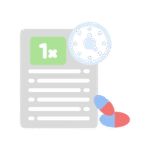
Drug Dosage Calculator:
Calculates precise Anaesthesia dosages based on patient weight and condition.
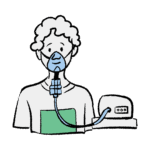
Ventilator Data Integration:
Syncs with ventilators to document settings and monitor respiratory parameters.

Post-Anaesthesia Recovery Scoring:
Uses scoring systems to track recovery progress.

Allergy and Reaction Alerts:
Flags potential drug-allergy reactions during Anaesthesia planning.

Anaesthesia Consent Forms:
Digital forms for Anaesthesia consent, ensuring compliance and traceability.

Pain Management Protocols:
Templates for post-op pain management, including PCA pump settings.
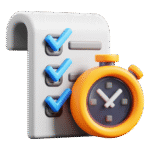
Anaesthesia Time Tracking:
Monitors duration of Anaesthesia administration for billing and safety.
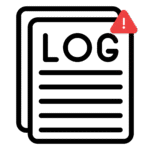
Critical Event Logging:
Logs critical events (e.g., hypotension) with timestamps for post-op review.

Prenatal Care Templates:
Guides prenatal visits with automated checklists for screenings and milestones.
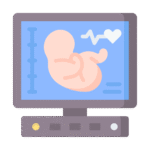
Fetal Monitoring Integration:
Syncs with fetal monitors to document heart rate and contractions in real-time.
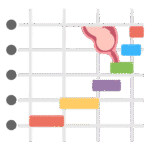
Labor Progress Charting:
Portogram templates for tracking labor progress, including dilation and descent.

High-Risk Pregnancy Scoring:
Automated risk scoring for conditions like preeclampsia, ensuring timely interventions.

Ultrasound Data Integration:
Imports ultrasound images and measurements directly into patient records.

Delivery Outcome Logging:
Documents delivery details (e.g., C-section, complications) with structured templates.

Postnatal Follow-Up Scheduler:
Automates scheduling of maternal and neonatal follow-ups post-delivery.

Gynecological Procedure Notes:
Templates for procedures like hysterectomies, ensuring accurate documentation.

Contraceptive Counselling Tool:
Guides family planning discussions with integrated decision-support tools.

Maternal Health Analytics:
Tracks maternal outcomes (e.g., postpartum depression) for continuous improvement.
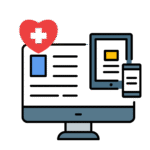
Patient Education Portal:
Provides prenatal and gynecological education, improving patient engagement.

Postnatal Care Tracking:
Templates for postnatal monitoring, ensuring timely maternal and neonatal care.
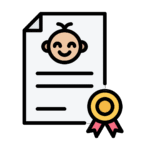
APGAR Scoring Templates:
Automates APGAR scoring at birth, documenting neonatal health immediately.

NICU Vitals Integration:
Syncs with monitors for real-time tracking of heart rate, oxygen levels, and more.

Feeding Management:
Tracks breast milk, formula intake, and feeding schedules with detailed logs.
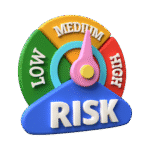
Neonatal Risk Assessment:
Calculates risk scores for conditions like NEC, guiding early interventions.

Kangaroo Care Tracking:
Documents skin-to-skin contact duration, supporting developmental care protocols.
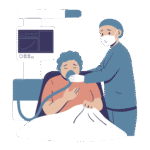
Ventilation Settings Log:
Records ventilator settings and adjustments for neonates on respiratory support.
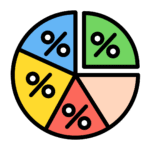
Growth Percentile Charts:
Auto-generates growth charts (e.g., Fenton charts) for preterm infant monitoring.

Parental Education Tool:
Provides neonatal care tips and milestones for parents via the portal.

Bilirubin Monitoring:
Tracks jaundice levels and phototherapy duration for neonatal jaundice management.

Discharge Planning Templates:
Guides preparation for neonatal discharge with checklists and follow-up schedules.

Multidisciplinary Care Coordination:
Streamlines collaboration among neonatologists, nurses, and specialists in the NICU.

Growth Monitoring:
Templates for tracking weight, length, and head circumference, ensuring developmental oversight.




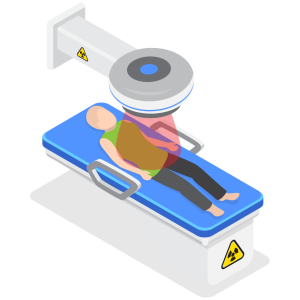


Pediatric Templates:
Pre-built templates for well-child visits, developmental screenings, and chronic conditions, streamlining workflows.

Vaccination Tracking:
Templates for immunization schedules, ensuring timely pediatric vaccinations.
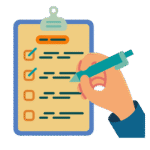
Well-Child Visit Templates:
Guides pediatric check-ups with age-specific checklists for assessments.
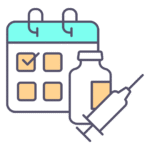
Immunization Scheduler:
Automates vaccination schedules with reminders for upcoming doses

Growth Chart Integration:
Auto-generates CDC/WHO growth charts for weight, height, and BMI tracking.
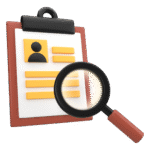
Developmental Screening Tool:
Includes standardized tools to assess developmental milestones.

Pediatric Dosage Calculator:
Calculates medication doses based on child weight and age accurately.

Allergy and Asthma Tracker:
Logs allergy triggers and asthma episodes for chronic condition management.

Parental Consent Forms:
Digital forms for parental consent, ensuring compliance for treatments.

Nutrition Assessment:
Templates for dietary evaluations, supporting pediatric nutrition planning.

Paediatric Surgical Templates:
Pre-built templates for pre-op, intra-op, and post-op care, streamlining workflows for children.

Post-Op Recovery Tracking:
Templates for monitoring recovery, ensuring timely Paediatric care

Pre-Op Assessment Templates:
Age-specific templates for evaluating congenital anomalies and surgical risks in children.

Intra-Op Documentation:
Real-time templates for documenting Paediatric procedures, including incision details.
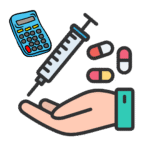
Anaesthesia Dosage Calculator:
Calculates Anaesthesia doses based on child age and weight accurately.

Surgical Consent Forms:
Digital parental consent forms, ensuring compliance for Paediatric surgeries.

Post-Op Growth Monitoring:
Tracks growth metrics post-surgery, ensuring developmental progress in children.

Congenital Anomaly Tracker:
Logs and monitors congenital defects for long-term surgical planning.

Pain Management Protocols:
Age-appropriate templates for post-op pain management in children.

Oncology Templates:
Pre-built templates for cancer staging, chemo planning, and follow-ups, streamlining workflows.

Cancer Staging Templates:
Guides TNM staging with structured templates for accurate cancer classification.

Chemo Regimen Planner:
Designs and tracks chemotherapy cycles, dosages, and schedules with automated alerts.

Tumor Board:
Facilitates multidisciplinary discussions with shared records and decision logs.

Oncology Drug Calculator:
Calculates chemo drug dosages based on patient weight, BSA, and protocol.

Survival Outcome Analytics:
Tracks progression-free survival and overall survival for oncology patients.

Palliative Care Notes:
Templates for palliative care plans, addressing quality of life in oncology.
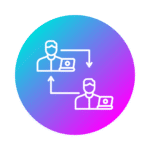
Follow-Up Scheduler:
Automates scheduling of oncology follow-ups, ensuring timely recurrence monitoring.

Oncology Surgery Templates:
Pre-built templates for pre-op planning, intra-op notes, and post-op

Tumor Mapping Templates:
Guides tumor resection planning with anatomical mapping and margin documentation.

Intra-Op Cancer Staging:
Real-time staging templates during surgery, integrating pathology findings.
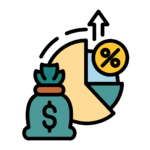
Surgical Margin Tracker:
Tracks resection margins intra-op, ensuring complete tumor removal documentation.

Oncology Consent Forms:
Digital consent forms for cancer surgeries, ensuring compliance and traceability.

Post-Op Chemo Integration:
Links with medical oncology for adjuvant therapy planning post-surgery.
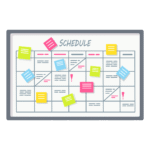
Tumor Board Scheduler:
Coordinates multidisciplinary tumor board meetings with shared patient data.
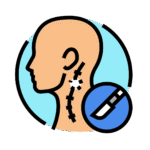
Lymph Node Dissection Notes:
Templates for documenting lymph node dissections and biopsy results.

Follow-Up Oncology Alerts:
Automates alerts for oncology follow-ups, ensuring timely recurrence checks. op care, streamlining workflows
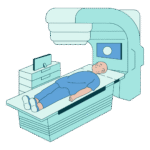
Radiation Therapy Templates:
Pre-built templates for treatment planning, dosage, and follow-ups, streamlining workflows.

Treatment Planning Integration:
Syncs with systems like Varian for seamless radiation therapy planning.
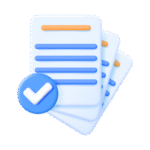
Brachytherapy Documentation:
Templates for documenting brachytherapy procedures, including implant details.

Follow-Up Scheduler:
Automates scheduling of follow-ups to monitor radiation therapy outcomes.

Radiation Dose Tracking:
Logs cumulative radiation doses per session, ensuring safe limits are maintained.

Side Effect Grading:
Uses RTOG/EORTC scales to document radiation toxicity with structured templates.

Radiation Consent Forms:
Digital consent forms for radiation therapy, ensuring compliance and traceability.

Dosimetry Calculator:
Calculates radiation doses based on patient anatomy and treatment plans.
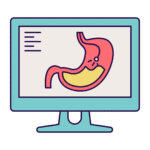
GI Templates:
Pre-built templates for endoscopy, GI assessments, and follow-ups, streamlining workflows.

GI Symptom Tracker:
Logs symptoms with severity scales for trend analysis.

Capsule Endoscopy Integration:
Imports capsule endoscopy images and videos for detailed analysis.

Hepatitis Monitoring Dashboard:
Monitors viral loads and treatment responses for hepatitis patients.
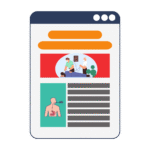
Endoscopy Report Templates:
Guides detailed endoscopy reporting with images and findings integration.
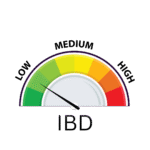
IBD Flare Risk Scoring:
Calculates risk scores for IBD flares, guiding timely interventions.

GI Procedure Consent Forms:
Digital consent forms for procedures like colonoscopies, ensuring compliance.

Follow-Up Scheduler:
Automates scheduling of GI follow-ups for chronic condition management.
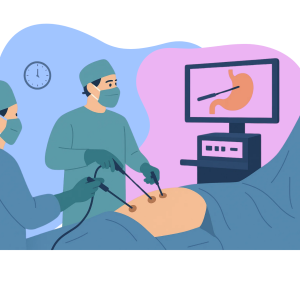





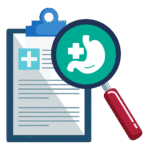
GI Surgical Templates:
Pre-built templates for pre-op, intra-op, and post-op care, streamlining workflows.

Intra-Op Documentation:
Real-time templates for GI procedures, including anastomosis details.

Stoma Care Protocols:
Templates for stoma management and patient education post-surgery.

Surgical Consent Forms:
Digital consent forms for GI surgeries, ensuring compliance.

Pre-Op GI Assessment Templates:
Guides evaluations for surgeries like colectomy, documenting risks.
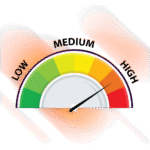
Anastomotic Leak Risk Scoring:
Calculates risk scores for leaks post-surgery, guiding interventions.
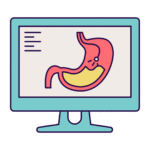
Endoscopy Integration:
Syncs intra-op endoscopy findings for procedures like Whipple surgery.

Follow-Up Scheduler:
Automates scheduling of follow-ups for long-term GI surgery outcomes.

Dental Surgery Templates:
Pre-built templates for pre-op, intra-op, and post-op dental care, streamlining workflows.

Intra-Op Procedure Documentation:
Real-time templates for dental surgeries, including extraction and implant details.

Nerve Injury Risk Scoring:
Calculates risk scores for nerve damage during dental surgeries.

Bone Graft Documentation:
Tracks bone graft materials and outcomes for reconstructive surgeries.
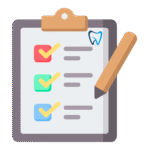
Pre-Op Dental Assessment Templates:
Guides evaluations for procedures like wisdom tooth extraction, documenting risks.
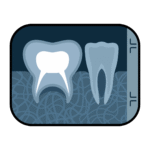
Dental Imaging Integration:
Syncs with CBCT and intraoral scans for procedure planning and documentation.

Surgical Consent Forms:
Digital consent forms for dental procedures, ensuring compliance.

Follow-Up Scheduler:
Automates scheduling of post-op dental follow-ups for recovery monitoring.
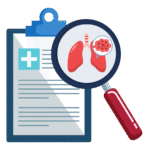
Pulmonary Templates:
Pre-built templates for respiratory assessments, ventilator settings, and critical care, streamlining workflows.

Ventilator Data Integration:
Syncs with ventilators to log settings like tidal volume and PEEP.
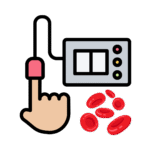
ABG Analysis Tracker:
Records arterial blood gas results with trends for respiratory management.

Bronchoscopy Documentation:
Templates for documenting bronchoscopy findings, including lavage results.
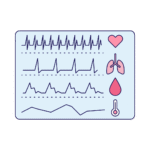
Critical Care Flow Sheet:
Real-time flow sheet for ICU vitals, fluids, and interventions.
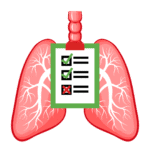
Respiratory Assessment Templates:
Guides pulmonary function tests and symptom assessments for COPD, asthma.
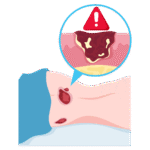
Sepsis Early Warning System:
Detects early signs of sepsis in critical care patients with alerts.

Weaning Protocol Templates:
Automates weaning protocols for ventilator-dependent patients, ensuring safety.

Pulmonary Rehab Plans:
Designs and tracks pulmonary rehabilitation programs for chronic conditions.
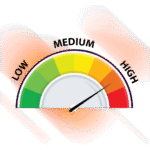
Mortality Risk Scoring:
Calculates risk scores (e.g., APACHE II) for critical care prognosis.
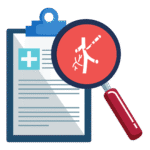
Vascular Surgery Templates:
Pre-built templates for pre-op, intra-op, and post-op care, streamlining workflows.
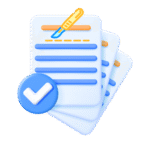
Intra-Op Documentation:
Real-time templates for vascular surgeries, including graft placement details.

Stent Graft Tracking:
Logs stent graft type, size, and placement for future reference.

Surgical Consent Forms:
Digital consent forms for vascular procedures, ensuring compliance.

Pre-Op Vascular Assessment Templates:
Guides evaluations for procedures like AAA repair, documenting risks.
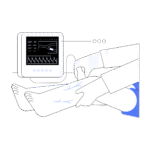
Vascular Imaging Integration:
Syncs with Doppler ultrasound and CTA for procedure planning.
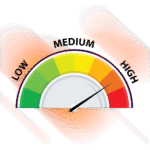
Thrombosis Risk Scoring:
Calculates risk scores for post-op thrombosis, guiding anticoagulation therapy.

Follow-Up Scheduler:
Automates scheduling of vascular surgery follow-ups for long-term outcomes.

Palliative Care Templates:
Pre-built templates for pain assessments, symptom control, and end-of-life care, streamlining workflows.

Opioid Dosage Calculator:
Calculates safe opioid doses for pain management, reducing overdose risks.

Palliative Care Scoring:
Uses tools (e.g., Palliative Performance Scale) to assess patient status.
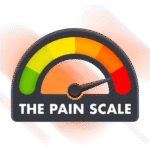
Pain Assessment Templates:
Guides pain scoring (e.g., Numeric Rating Scale) with structured templates.

Advance Directive Forms:
Digital forms for documenting patient wishes, ensuring compliance.

Symptom Management Alerts:
Automates alerts for worsening symptoms, prompting timely interventions.

Psychiatry Templates:
Pre-built templates for mental health assessments, therapy notes, and treatment plans, streamlining workflows.

Mood and Symptom Tracker:
Logs patient-reported mood and symptoms (e.g., anxiety, sleep) daily.

Therapy Session Notes:
Structured templates for documenting CBT, DBT, or other therapy sessions.

Mental Health Assessment Templates:
Guides assessments with tools like PHQ-9 for depression screening.

Suicide Risk Scoring:
Automates risk with alerts.

Outcome Analytics:
Tracks treatment outcomes for continuous improvement.

Neurology Templates:
Pre-built templates for neurological exams, seizure tracking, and treatment plans, streamlining workflows.

EEG/EMG Integration:
Syncs EEG and EMG data for real-time neurodiagnostic result documentation.
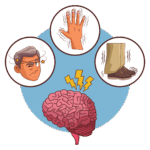
Movement Disorder Scales:
Includes scales to track disease progression.

Seizure Log Tracker:
Records seizure frequency, duration, and triggers with structured templates.
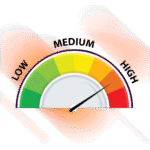
Stroke Risk Scoring:
Automates risk scores for stroke prevention planning.
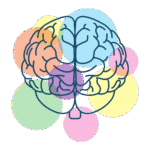
Tele neurology Support:
Facilitates virtual consultations with integrated video and neuro exam notes.
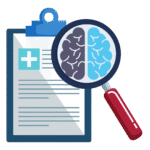
Pre-Op Neuro Assessment Templates:
Guides evaluations for surgeries like craniotomy, documenting risks.

Neuroimaging Integration:
Syncs with MRI/CT for intra-op navigation and post-op analysis.

Post-Op Rehab Plans:
Designs neurorehabilitation plans with integrated therapy tracking.

Intra-Op Documentation:
Real-time templates for neurosurgery, including brain mapping and resection details.

Surgical Consent Forms:
Digital consent forms for neurosurgery procedures, ensuring compliance.

Follow-Up Scheduler:
Automates scheduling of neurosurgery follow-ups for long-term monitoring.

Pre-Op Ortho Assessment Templates:
Guides evaluations for surgeries like knee replacements, documenting risks.

Surgical Consent Forms:
Digital consent forms for orthopedic procedures, ensuring compliance.

DVT Risk Scoring:
Calculates risk scores for deep vein thrombosis post-surgery.

Post-Op Rehab Protocols:
Automates rehab plans with milestones for joint mobility and strength.

X-Ray Integration:
Syncs with X-rays for pre-op planning and post-op assessment.

Follow-Up Scheduler:
Automates scheduling of orthopedic follow-ups for recovery monitoring.
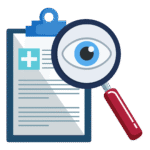
Eye Exam Documentation Templates:
Guides detailed eye exams with templates for visual acuity, IOP, and fundus exams.

Glaucoma Risk Scoring:
Calculates risk scores for glaucoma based on IOP and optic nerve findings.

Retinal Imaging Integration:
Imports retinal scans for documenting conditions like diabetic retinopathy.
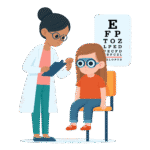
Vision Test Integration:
Syncs with devices like autorefractors to log visual acuity and refraction data.

Surgical Consent Forms:
Digital consent forms for procedures like LASIK or cataract surgery, ensuring compliance.

Follow-Up Scheduler:
Automates scheduling of ophthalmology follow-ups for chronic eye conditions.

Hormone Assessment Templates:
Guides thyroid function tests and adrenal assessments with structured templates.

Insulin Dosage Calculator:
Calculates insulin doses based on glucose readings and patient factors.

Bone Density Tracking:
Logs DEXA scan results to monitor osteoporosis in endocrine patients.

Glucose Monitoring Integration:
Syncs with CGM devices to log real-time glucose levels for diabetes care.

Endocrine Consent Forms:
Digital consent forms for hormone therapy, ensuring compliance.

Follow-Up Scheduler:
Automates scheduling of endocrinology follow-ups for chronic condition monitoring.
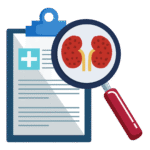
CKD Staging Templates:
Guides CKD staging with templates for eGFR, proteinuria, and comorbidities.

Consent Forms for Dialysis:
Digital consent forms for dialysis and transplant procedures, ensuring compliance.

Anemia Management Protocols:
Guides ESA dosing and iron therapy for CKD-related anemia.
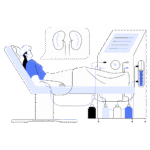
Dialysis Access Monitoring:
Tracks vascular access health with complication alerts.

Fluid Balance Calculator:
Calculates fluid intake/output for dialysis patients, aiding in management.

Follow-Up Scheduler:
Automates scheduling of nephrology follow-ups for CKD and transplant
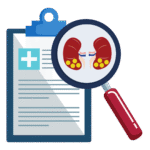
Urologic Assessment Templates:
Guides evaluations for conditions like BPH or kidney stones, documenting risks.

Surgical Consent Forms:
Digital consent forms for urologic procedures, ensuring compliance.
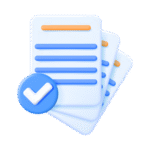
Intra-Op Documentation:
Real-time templates for urologic surgeries, including cystoscopy and stent placement.

Follow-Up Scheduler:
Automates scheduling of urology follow-ups for chronic condition monitoring.
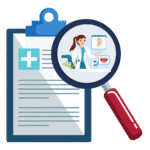
ENT Exam Documentation Templates:
Guides detailed exams for ear, nose, and throat with structured templates.
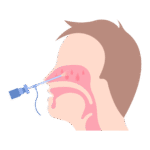
Sinus Endoscopy Reporting:
Documents endoscopic findings with image integration.

Surgical Consent Forms:
Digital consent forms for ENT procedures like tonsillectomy, ensuring compliance.

Allergy Testing Integration:
Imports allergy test results for managing chronic sinusitis.

Audiology Test Integration:
Syncs with audiometers to log hearing tests directly.

Hearing Loss Risk Scoring:
Calculates risk scores for hearing impairment based on exam data.

Voice Analysis Tracker:
Logs voice quality metrics for patients with throat conditions.

Follow-Up Scheduler:
Automates scheduling of ENT follow-ups for chronic condition monitoring.
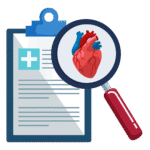
Cardiac Assessment Templates:
Guides detailed exams for heart function, including murmur and ECG findings.
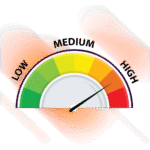
Cardiac Risk Scoring:
Calculates risk scores (e.g., Framingham) for heart disease prevention planning.

Surgical Consent Forms:
Digital consent forms for cardiac procedures like bypass surgery, ensuring compliance.
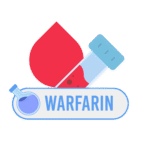
Anticoagulation Monitoring:
Logs INR levels and warfarin dosing for patients on anticoagulation therapy.

EKG Integration:
Syncs with EKG machines to log waveforms and interpret arrhythmias directly.
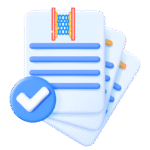
Cath Lab Documentation:
Documents cath lab procedures (e.g., stent placement) with structured templates.
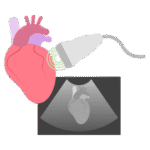
Echocardiogram Viewer:
Integrates echo reports and images for direct viewing and analysis.

Follow-Up Scheduler:
Automates scheduling of cardiology follow-ups for chronic condition monitoring.
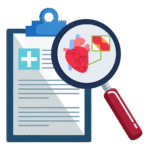
Pre-Op Cardiac Assessment Templates:
Guides evaluations for surgeries like CABG, documenting risks.

Surgical Consent Forms:
Digital consent forms for cardiothoracic procedures, ensuring compliance.

Intra-Op Documentation:
Real-time templates for cardiothoracic surgeries, including bypass graft details.

Follow-Up Scheduler:
Automates scheduling of cardiothoracic surgery follow-ups for recovery monitoring.

Skin Exam Documentation Templates:
Guides detailed exams with templates for lesion size, color, and distribution.

Surgical Consent Forms:
Digital consent forms for dermatologic procedures, ensuring compliance.
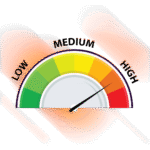
Skin Cancer Risk Scoring:
Calculates risk scores for melanoma detection.

Follow-Up Scheduler:
Automates scheduling of dermatology follow-ups for chronic skin conditions.

Pre-Op Aesthetic Assessment Templates:
Guides evaluations for surgeries like breast augmentation, documenting goals.
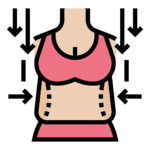
Flap Viability Monitoring:
Monitors flap perfusion post-reconstruction with alerts for ischemia.

Surgical Consent Forms:
Digital consent forms for cosmetic and reconstructive procedures, ensuring compliance.

Follow-Up Scheduler:
Automates scheduling of follow-ups for long-term cosmetic surgery outcomes.





